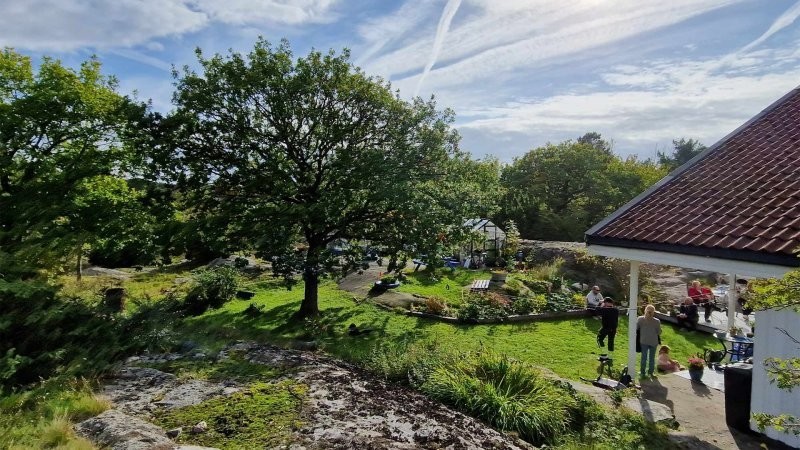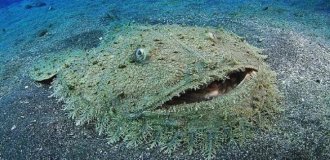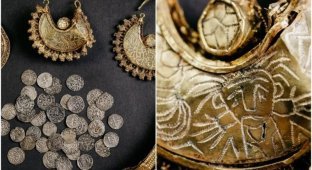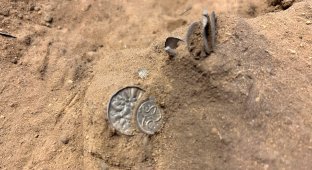A Norwegian family was looking for an earring in the yard and found Viking jewelry (4 photos)
A family from Norway used a metal detector to explore the area in search of a lost earring. Near a large tree behind the house, the device gave a signal. Instead of earrings, the Norwegians pulled out of the ground relics from a Viking burial more than 1,000 years old. 
According to experts, the two bronze brooches were once plated with gold.
"These artifacts may be the first findings from the Viking Age (793-1066 AD) on the island of Jomfruland and confirm that people lived here at that time," says archaeologist Vibeke Lia. 
Jomfruland is a small island off the southern coast of Norway with a permanent population of about 75 people.
The family reported their discovery to local authorities. Archaeologists continued excavations and studied artifacts. 
According to Lia, several stone structures, also called “cairns,” were previously discovered in the southwest of Yomfruland. Researchers have suggested that these cairns may have been made during the Viking Age to mark their rights to the land and sea route. However, there was no evidence that people lived on the island until the first historical records appeared in the Middle Ages.
A new find - the grave of an aristocratic woman - suggests that the cairns were indeed made by the Vikings.
The larger artifact is an oval-shaped brooch that a woman might have worn on the straps of her dress. Such brooches were often found in Viking Age graves, and its style was characteristic of the 9th century.
“They come in pairs, one for each strap, so there should be another one,” Leah said. 
The second item was more difficult to identify, but it also turned out to be a brooch. Molds for making such jewelry were found at archaeological sites in the Danish city of Ribe, founded in the 6th century by the early Viking Age. However, the details of the found specimen suggest that it was made in the 9th century.
The products are made of bronze with traces of gilding, decorated with complex engravings of animals and geometric patterns.
"They're in pretty good condition compared to most finds because the site was never plowed," the archaeologist explained.























